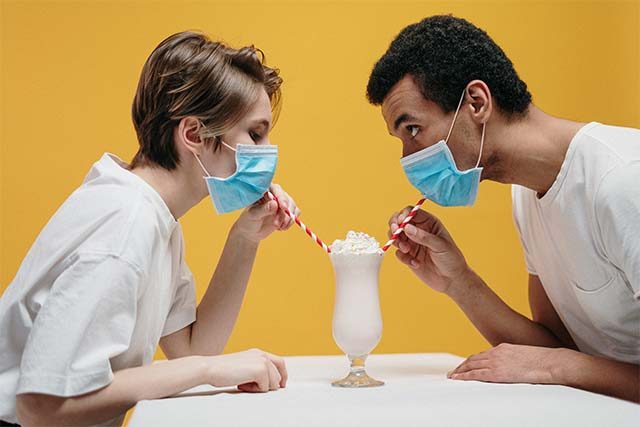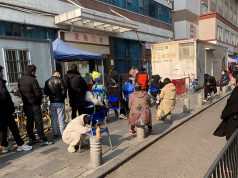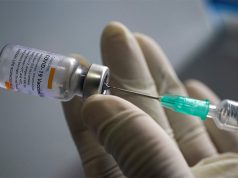The Conversation’s Editor’s Note: With another holiday approaching, it’s tempting to want a taste of freedom from COVID-19 social distancing. Who doesn’t want sweet nothings over a glass of Champagne and some chocolate cake? But it’s also important to remember that daily case numbers are still higher now than they were throughout most of 2020. The risk of catching COVID-19 is still extremely high in most parts of the country. Epidemiologist Ryan Malosh answers some questions about eating out and socializing.
Why can’t I eat out for Valentine’s Day if I socially distance?
Restrictions on indoor dining are some of the hardest to swallow. We all have our favorite restaurants, and the experience of eating out is a big part of feeling normal. In addition, many restaurants are cornerstones of our communities, and owners and staff have struggled throughout the pandemic.
But dining indoors remains a high-risk activity. The most effective prevention strategies – ventilation, physical distancing and wearing masks – are challenging in this setting. Even when physical distancing is possible, scientists have found that long-range transmission can occur. Restaurants are trying to innovate ways to determine how safe their spaces are – including using CO2 monitors to gauge ventilation – but these technologies are far from guarantees of safety.
One recent study suggested that policies such as indoor dining restrictions may have saved nearly 2,000 lives in Michigan in the past few months. Takeout and delivery are much safer options (and, I think, more romantic).
Would it matter if I go at off-hours?
Another study,
using mobility data to examine community spread, found that capacity restrictions can reduce the number of new infections tied to indoor dining, but they do not eliminate the risk.
Further, with new SARS-CoV-2 variants circulating in a number of states, sitting for hours, maskless and indoors, with anyone outside your own household becomes even riskier. Experts know these variants spread more easily. Case counts, hospitalizations and deaths are starting to come down, but those encouraging trends are unlikely to continue if we collectively decide to throw caution to the wind now.
I’ve been vaccinated, so why can’t I burn my mask?
First, the good news. The vaccines that have been authorized are marvels of medical science. The efficacy against symptomatic and severe infections is phenomenal, as high as 95% for the Pfizer vaccine. They are a big part of how we get back to something approximating normal. And evidence is emerging that vaccination can prevent asymptomatic transmission and reduces viral load, or the amount of virus people have inside them. These findings suggest that vaccination will also reduce transmission of the virus and contribute to herd immunity.
But the unknowns about how well vaccines work against these new variants mean we have to be careful just a bit longer – and we don’t yet know how long that will be. Plus, masks and other prevention strategies may also be lowering our risk of other serious illnesses, such as influenza.
Everyone in my pod has been vaccinated. Is it safe to gather at someone’s house without masks?
I think small gatherings where everyone has completed the vaccine regimens are probably going to be relatively safe. There isn’t much data to support this yet, because the proportion of people vaccinated in the U.S. is still relatively low. But the studies I mentioned above all suggest that once your “quaranteam” is fully vaccinated, it will likely be safe to reconnect in this way. And discouraging people from doing so might actually discourage vaccination.
Everyone I know says they are being safe but then I hear that they had brunch out with a group of friends. How can I best tell when my friends’ ideas of being safe align with my own ideas?
Some studies suggest people are downplaying the risks they’re taking. People do this because they don’t want to be judged. I can tell you from my personal experience that the best way to get honest answers is to be honest yourself. Talk about what level of risk you’re taking and what level you’re willing to accept. If someone is taking risks that you’re not comfortable with, it is OK to tell them you’ll see them after you get vaccinated.
The bottom line is that there is a lot to be hopeful about as vaccine distribution ramps up in the U.S. and cases come down. The major challenges over the next few months are to continue the progress we’re making on community spread and to ensure that vaccines are available to the most vulnerable communities in an equitable way.![]()
Ryan Malosh, Assistant Research Scientist, University of Michigan. This article is republished from The Conversation under a Creative Commons license. Read the original article.










